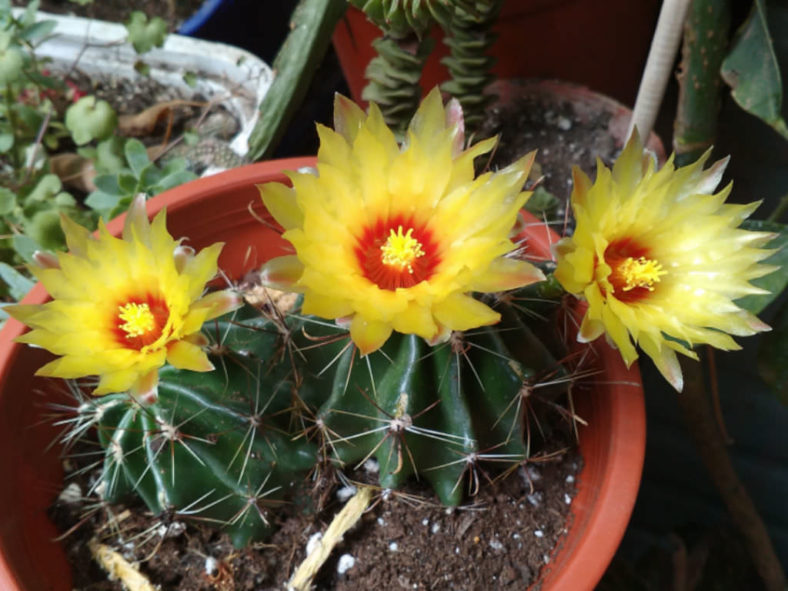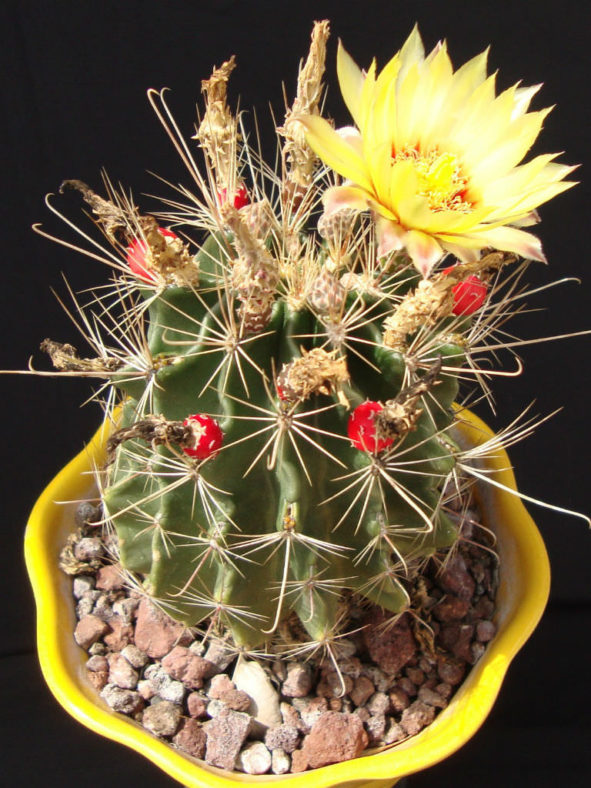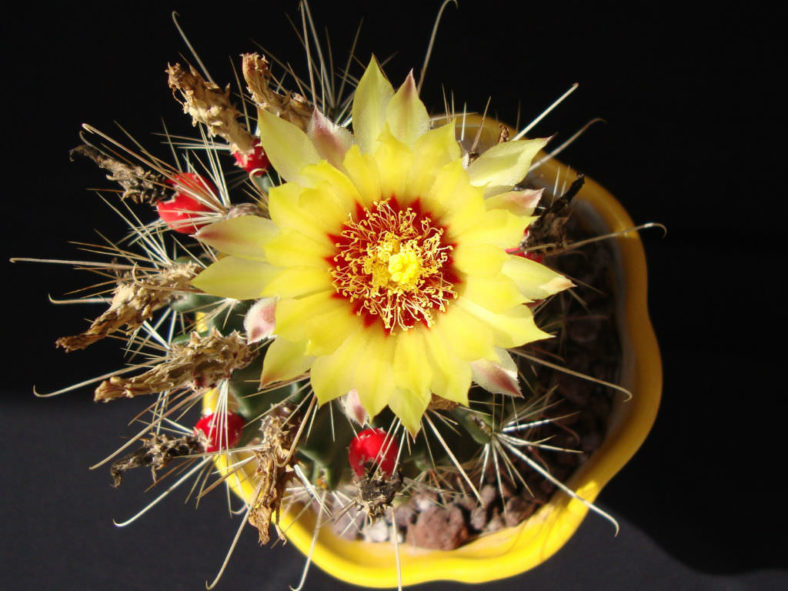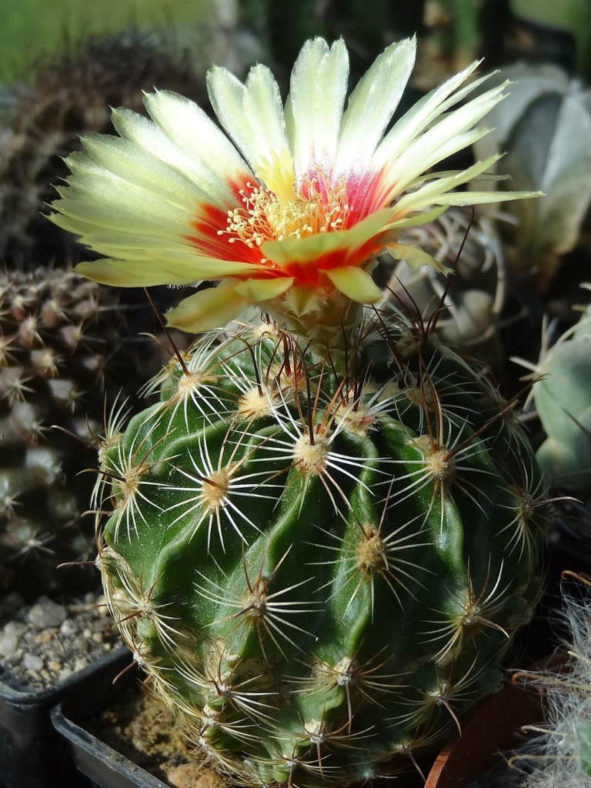Scientific Name
Echinocactus platyacanthus Link & Otto
Common Name(s)
Miniature Barrel Cactus, Hedgehog Cactus, Twisted Rib Cactus, Fishhook Cactus
Synonym(s)
Echinocactus setispinus, Cactus bicolor, Echinocactus hamatus, Ferocactus setispinus, Hamatocactus bicolor, Hamatocactus setispinus
Scientific Classification
Family: Cactaceae
Subfamily: Cactoideae
Tribe: Cacteae
Genus: Thelocactus
Origin
Thelocactus setispinus is native to the United States (Texas) and Mexico (Coahuila, Nuevo León, and Tamaulipas).
Description
Thelocactus setispinus is a small cactus with a solitary, globose to elongate-globose stem with 12 to 15 ribs lined with clusters of spines. The stem can grow up to 12 inches (30 cm) tall and 4 inches (10 cm) in diameter. Each areole bears 9 to 17 radial and 1 to 3 central spines. The radial spines are needle-shaped, bright brown or white, measuring up to 1 inch (2.5 cm) long, while the central spines are longer and stronger, straight and curved like a hook at the tip.
The flowers are yellow with a red center and can reach up to 2.8 inches (7 cm) in length and 1.6 inches (4 cm) in diameter. They appear in late summer to fall. The fruits are red, round or elliptical and can grow up to 0.6 inches (1.5 cm) in diameter.

Hardiness
USDA hardiness zones 9a to 11b: from 20 °F (−6.7 °C) to 50 °F (+10 °C).
How to Grow and Care
Overall, these are beautiful cacti for dish gardens or indoor displays. Their collection is especially attractive, as they look like a collection of balls tossed upon the ground. However, it is critical never to let these cacti be exposed to prolonged periods in water or even very high humidity. They will suffer from rot in the presence of humidity. Echinocactus is vulnerable to pests, including aphids, mealybugs, scale, and whiteflies. Identify the infestation as early as possible and treat it with the leave toxic option.
It is best to repot at the beginning of the growing season or summer. To repot a cactus, ensure the soil is dry before repotting, then gently remove the pot. Next, knock away the old soil from the roots and remove any rotted or dead roots.
Learn more at How to Grow and Care for Echinocactus.
Links
- Back to genus Thelocactus
- Succupedia: Browse succulents by Scientific Name, Common Name, Genus, Family, USDA Hardiness Zone, Origin, or cacti by Genus
Photo Gallery
Click on a photo to see a larger version.


